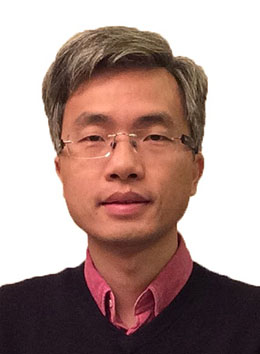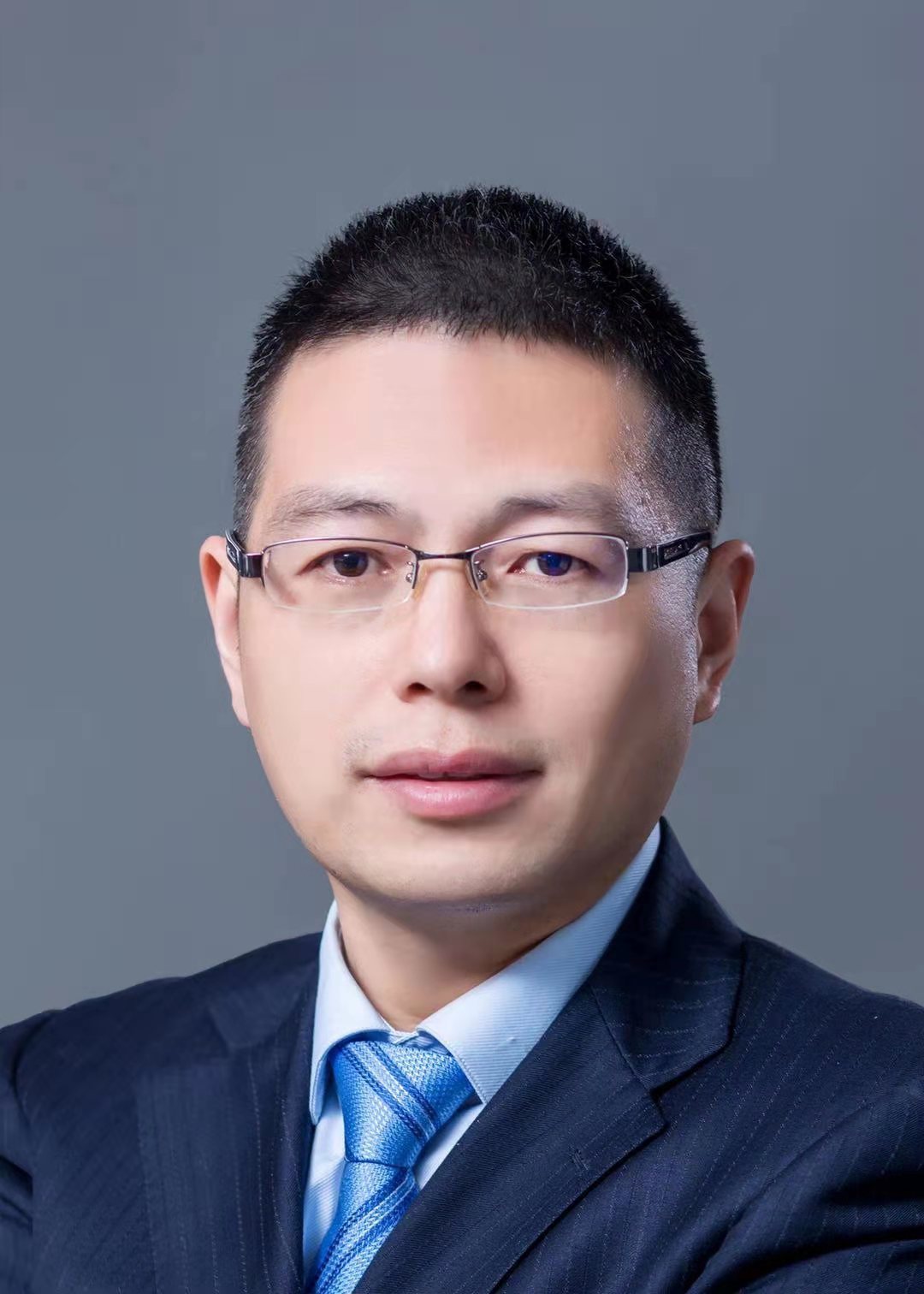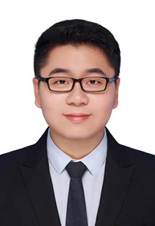Keynote Speaker Ⅰ

Prof. Jie Yang
Shanghai Jiao Tong University, China
Bio: Jie Yang received a bachelor’s degree in Automatic Control in Shanghai Jiao Tong University (SJTU), where a master’s degree in Pattern Recognition & Intelligent System was achieved three years later. In 1994, he received Ph.D. at Department of Computer Science, University of Hamburg, Germany. Now he is the Professor and Director of Institute of Image Processing and Pattern recognition in Shanghai Jiao Tong University. He is the principal investigator of more than 30 national and ministry scientific research projects in image processing, pattern recognition, data mining, and artificial intelligence. He has published six books,more than five hundreds of articles in national or international academic journals and conferences. Google citation 24964,H-index 81. Up to now, he has supervised 5 postdoctoral, 46 doctors and 70 masters, awarded six research achievement prizes from ministry of Education, China and Shanghai municipality. Two Ph.D. dissertation he supervised was evaluated as “National Best Ph.D. Dissertation” in 2009 and in 2017. Two Ph.D. dissertations he supervised were evaluated as “Shanghai Best Ph.D. Dissertation” in 2009 and 2010. He has owned 48 patents.
Speech Title: Recent Research Work on AI Medical Diagnosis
Abstract: Part A: Development of a Chromosome Classification Approach Using Deep Convolutional Networks. Bottlenecks of chromosome classification are analysed. Flowchart of the proposed Varifocal-Net is proposed, including global-scale and local-scale feature learning, classification based on the fused features. Part B: Segmentation methods for AI medical diagnosis. Flowchart of the proposed pulmonary nodule segmentation framework is presented. A voxel-connectivity aware approach for accurate airway segmentation using convolutional neural networks is presented. Flowchart of the proposed method for pulmonary airway and artery-vein segmentation is introduced. More than 10 papers about above research have been published on top journals (e.g. TMI)and top conferences (e.g. MICCAI).
Keynote Speaker Ⅱ

Prof. Ping Tan
The Hong Kong University of Science and Technology, China
Bio: Ping Tan received the bachelor's and master's degrees from Shanghai Jiao Tong University in China, in 2000 and 2003, respectively, and the PhD degree from the Hong Kong University of Science and Technology in 2007. He is currently an Professor of The Hong Kong University of Science and Technology, China. His research interests include computer vision, computer graphics, and robotics. He has served as an editorial board member for IEEE Transactions on Pattern Analysis and Machine Intelligence (PAMI), the International Journal of Computer Vision (IJCV), Computer Graphics Forum (CGF), and the Machine Vision and Applications (MVA). He served as an area chair for CVPR, SIGGRAPH, SIGGRAPH Asia, and IROS.
Speech Title: Spatial Intelligence, From Localization to Manipulation
Abstract: Spatial Intelligence aims to teach robots to learn to reason and to interact with 3D space. This talk covers our works on four different aspects of spatial intelligence, including localization, mapping, scene understanding, and navigation/manipulation. We introduce an method for dense visual SLAM with regular RGB cameras by optimizing the NeRF-based map and camera poses simultaneously. To facilitate localization on mobile systems, we introduce a map compression method that can compress the map size by 200-300 times. We also introduce a novel Gaussian Splatting method to enhance 3D mapping quality and efficiency. The reconstructed 3D map can be parsed with object detection to facilitate robot navigation. We explore scene context information for both 3D indoor scene generation and understanding. These capabilities enable robots to navigate and interact with the real physical world.
Keynote Speaker Ⅲ

Prof. Dong Liang
Shenzhen Institute of Advanced Technology, Chinese Academy of Sciences
Bio: Dr. Liang is currently a researcher and doctoral supervisor at the Shenzhen Institute of Advanced Technology, Chinese Academy of Sciences. He is a winner of the National Science Fund for Distinguished Young Scholars; currently serves as director of the Institute of Medical Engineering and Medical Artificial Intelligence Research Center of the Shenzhen Institute of Advanced Technology, and director of the Medical Imaging Technology and Equipment Engineering Laboratory of the Chinese Academy of Sciences . His main research of interests are machine learning, compressed sensing and their application in biomedical imaging. He presides over a number of scientific research projects such as the National Natural Science Foundation Tianyuan Fund Key Project, the National Key R&D Plan Project, and the Guangdong Province Applied R&D Key Project. He has published more than 100 papers in international academic journals and currently serves as an editorial board member of authoritative journals in many fields such as "IEEE Transactions on Medical Imaging"; first prize of the National Science and Technology Progress Award, the first prize of the Guangdong Province Technology Invention Award, and the Science and Technology Progress Award of the Chinese Society of Biomedical Engineering Winner of first prize, first prize of Shenzhen Technology Invention Award and Wang Tianjuan Wave Spectroscopy Award.
Speech Title: Fast Magnetic Resonance Imaging: Theory, Technique and Application
Abstract: Accelerating magnetic resonance imaging (MRI) has been an ongoing research topic since its invention in the 1970s. Among a variety of acceleration techniques, compressed sensing (CS) has become an important strategy during the past decades. Although CS-based methods can achieve high performance with many theoretical guarantees, it is challenging to determine the numerical uncertainties in the reconstruction model such as the optimal sparse transformations, sparse regularizer in the transform do-main, regularization parameters and the parameters of the optimization algorithm. Recently, deep learning has been introduced in fast MRI to address these issues and shown potential to significantly improve image quality. In this presentation, we survey compressed sensing and deep learning methods for MR image reconstruction with a big picture. Specifically, we introduce some works using these two techniques from my group.
Keynote Speaker Ⅳ

Prof. Chen Gong
Nanjing University of Science and Technology, China
Bio: Chen Gong received his dual doctoral degree from Shanghai Jiao Tong University (SJTU) and University of Technology Sydney (UTS), respectively. Currently, he is a full professor in the School of Computer Science and Engineering, Nanjing University of Science and Technology. His research interests mainly include machine learning, data mining, and learning-based vision problems. He has published more than 130 technical papers at prominent journals and conferences such as JMLR, IEEE T-PAMI, IEEE T-NNLS, IEEE T-IP, IEEE T-CYB, IEEE T-CSVT, IEEE T-MM, IEEE T-ITS, ACM T-IST, ICML, NeurIPS, ICLR, CVPR, ICCV, AAAI, IJCAI, ICDM, etc. He serves as the associate editor for IEEE T-CSVT and NePL, and also the Area Chair or Senior PC member of several top-tier conferences such as AAAI, IJCAI, ECML, AISTATS, ACM MM, etc. He won the "Excellent Doctorial Dissertation Award'' of Chinese Association for Artificial Intelligence, "Young Elite Scientists Sponsorship Program'' of China Association for Science and Technology, "Wu Wen-Jun AI Excellent Youth Scholar Award'', and the Scientific Fund for Distinguished Young Scholars of Jiangsu Province. He was also selected as the "Global Top Chinese Young Scholars in AI'' released by Baidu, and "World's Top 2% Scientists” released by Stanford University.
Speech Title: Open-World Learning: Challenges and Solutions
Abstract: As an essential branch of artificial intelligence, machine learning has attracted widespread attention. While current learning methods have made certain progress in numerous fields, most of them are based on the "closed-world" assumption, which entails training and evaluation on idealized public benchmark datasets with known categories, precise annotations, and consistent distributions. Consequently, the resulting models tend to perform well only in ideal closed environments under predefined conditions, but their effectiveness is greatly compromised in real-world open scenarios and various complex non-ideal conditions. Therefore, to enable machine learning methods to be truely applicable to practical tasks, this talk focuses on learning problems in open environments, emphasizing the challenges posed by out-of-distribution data, label noise, insufficient annotations, and other common issues in real-world scenarios during model training. The ultimate goal is to enhance the generalization and robustness of algorithms in practical applications. Relevant work has been published in top-tier journals and conferences such as NeurIPS, AAAI, TPAMI, and TMM.
